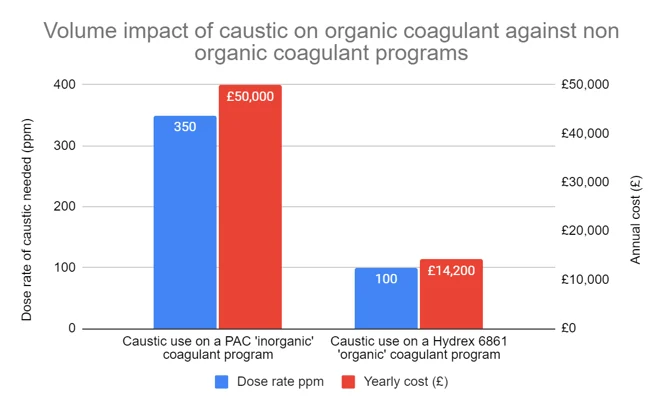WHY CAUSTIC SODA SHORTAGES MAY LEAD TO INNOVATIVE SOLUTIONS AND OPPORTUNITIES FOR IRAN

Caustic soda, or Sodium Hydroxide, is a vital yet often overlooked chemical with widespread applications, particularly in wastewater treatment. Currently, the UK faces considerable pricing pressure on caustic soda due to localized availability issues, increased demand, and surging energy costs attributed to the Ukraine conflict.
This essential chemical plays a pivotal role in treating wastewater, primarily in pH correction, ensuring effective treatment and compliance with local regulatory standards.
The traditional reliance on caustic soda in wastewater treatment, especially for pH correction alongside ferric or aluminum-based coagulants, has become a financial and environmental concern. The use of caustic soda is crucial to counteract the drop in pH caused by these coagulants, without which the wastewater treatment chemistry becomes ineffective, leading to consent breaches and compliance issues.
Industries, particularly the Food and Beverage sector, face increased risks due to the shortage of caustic soda. Companies in this sector, dealing with acidic wastewater profiles, find it challenging to maintain compliance without caustic soda’s pH adjustment.
However, innovative alternatives, such as Veolia Water Technologies’ ‘Hydrex 6861,’ offer organic, metal-free coagulants that operate effectively at lower pH ranges compared to traditional metal coagulants. Unlike metal-based coagulants, Hydrex 6861 does not significantly alter the wastewater’s pH, reducing the need for additional caustic soda for pH correction.
Transitioning from metal coagulants to organic coagulants involves a three-step process: a site audit to understand the wastewater profile, jar testing with Hydrex 6861, and a full-scale on-site trial supported by Veolia Waste Water Specialists.

A case study from a ready meal production site in the North West of England illustrates the successful use of Hydrex 6861 to achieve coagulation without the need for significant pH adjustment. This not only ensures compliance but also minimizes caustic soda usage, resulting in potential cost savings and reduced sludge volume.
Conclusion
Now, considering Iran’s potential benefits from this scenario, the country could capitalize on the shortage of caustic soda globally by exploring and adopting innovative wastewater treatment solutions. By investing in organic coagulants and promoting their use, Iran could position itself as a sustainable and cost-effective solution provider in the wastewater treatment industry. This strategic move could not only address the challenges posed by caustic soda shortages but also open up new opportunities for economic growth and environmental stewardship. Iran has the potential to become a key player in developing and implementing eco-friendly alternatives, contributing to global efforts in sustainable chemical practices.
Hossein Moshiri
WA +989124311007
info@chemkraft.ir
Source: https://chemkraft.ir/en/why-caustic-soda-shortages-may-lead-to-innovative/
Comments
Post a Comment